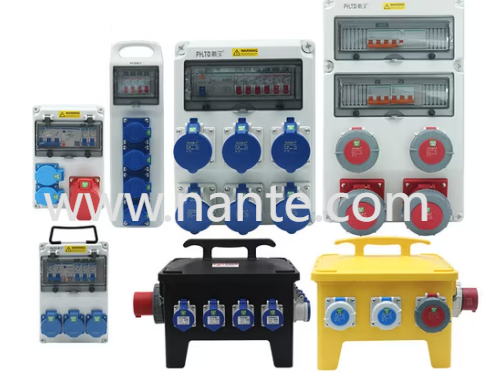As industries worldwide accelerate green transitions, the industrial socket box has evolved from a passive component to a strategic asset in sustainability and cost efficiency. These upgraded units now address pressing climate challenges while delivering measurable economic benefits—reshaping how facilities manage energy distribution in an era of ecological accountability.
Material Innovation Meets Circular Economics
Modern industrial socket boxes leverage unconventional materials like salvaged fishing nets and agricultural byproducts, repurposing waste into durable enclosures resistant to saltwater corrosion or chemical exposure. Unlike traditional plastics, these composites degrade safely post-retirement, aligning with zero-landfill initiatives. Coastal manufacturing hubs particularly benefit, where ocean plastics transformed into weatherproof housings simultaneously combat marine pollution and reduce material costs.
Energy Efficiency Through Intelligent Design
Upgraded units integrate smart load-balancing features that minimize phantom energy drain—critical as factories adopt intermittent renewable energy sources. Adaptive circuits prioritize solar or wind power during peak generation, reducing reliance on fossil-fueled grids. For warehouses transitioning to automated systems, this intelligence ensures stable operations while slashing electricity bills.
Economic Resilience via Durability
Extended product lifecycles directly impact operational budgets. Industrial socket boxes crafted from impact-resistant polymers or reinforced alloys withstand decades of heavy use, eliminating frequent replacements. Modular designs further enhance cost efficiency; facilities can upgrade individual components instead of entire systems during technological shifts, preserving capital for core investments.
Safety as Sustainability
Advanced protection mechanisms—self-sealing gaskets, electromagnetic shielding, and explosion-proof casings—prevent accidents that lead to costly downtime or remediation. In chemical plants or mining sites, these features ensure compliance with tightening safety regulations while avoiding environmental contamination risks. Reduced incident rates also lower insurance premiums, compounding long-term savings.
Cultural Resonance in Industrial Design
Forward-thinking manufacturers collaborate with artisan collectives to embed cultural narratives into functional units. Laser-etched patterns inspired by local ecosystems or recycled metals handcrafted into clasps transform industrial socket boxes into conversation pieces. These designs resonate with corporations seeking to showcase sustainability commitments through tangible, story-driven infrastructure.
Closed-Loop Lifecycle Integration
Pioneering take-back programs ensure retired units feed new production cycles. Crushed thermoplastic enclosures become raw material for next-gen models, while copper components are purified for reuse in EV charging stations. This circular model not only cuts procurement costs but also positions companies as leaders in resource stewardship—a growing differentiator in B2B partnerships.
For industrial socket boxes that power both productivity and planetary care, explore www.nante.com — where innovation energizes sustainable progress.

